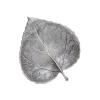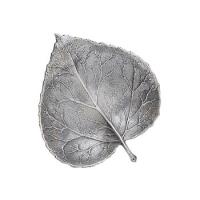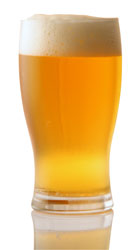
High gravity finishing
#21

Posted 12 May 2009 - 12:17 PM
#22

Posted 12 May 2009 - 12:34 PM
Not a bad idea. When troubleshooting, it's sometimes worthwhile to go to an extreme. Mash at 140F. If the results are as predicted, it means the mash is performing as expected and leads you in other areas.How did you verify that your thermometer was accurate? If your calibration thermometer is also 2-3 degrees off in addition to the 1-2F of your main thermometer or so, then your 149-150F mashes could very well be @154-155F.If it were me, I would mash 5 degrees cooler and 20 minutes longer next time to see what happens and go from there.
#23

Posted 12 May 2009 - 12:42 PM
Yup, copper poisoning of the yeast was my guess...but 5-10 minutes shouldn't yield this result. Ehh...my 1/50th USD.You thinking of the copper thing?
#24

Posted 12 May 2009 - 01:21 PM
I verified it was 212 (actual 211) at boiling and then compared it to 2 other thermometers at room temp. I agree that there still could me something to your post....and may try it. Mash the next one at 145 or less.How did you verify that your thermometer was accurate? If your calibration thermometer is also 2-3 degrees off in addition to the 1-2F of your main thermometer or so, then your 149-150F mashes could very well be @154-155F.If it were me, I would mash 5 degrees cooler and 20 minutes longer next time to see what happens and go from there.
I am not familiar with copper poisoning.....other than I thought it was bad for exposure during the fermentation process...not necessarily the brewing process. I also have a (pretty elaborate) copper manifold in my mash tun. Educate me. One thing that may be true is that between the roughly 8ft of 1/2" copper in my mash tun and a 50ft coil of 3/8" copper for my IM....there is a lot of surface area of tarnish taken off while I brew. MBYup, copper poisoning of the yeast was my guess...but 5-10 minutes shouldn't yield this result. Ehh...my 1/50th USD.
Edited by Mainelybrew, 12 May 2009 - 01:22 PM.
#25

Posted 12 May 2009 - 01:24 PM
I've got several coming up that I brewed with the IC in for the entire boil. I had a little mishap pulling out the hop bag to put the IC in late in the boil. So there were several all pellet batches that ended up being brewed that way - we'll see how well they attenuated....Yup, copper poisoning of the yeast was my guess...but 5-10 minutes shouldn't yield this result. Ehh...my 1/50th USD.
#26

Posted 12 May 2009 - 01:58 PM
What temp did you ferment that one at?FG 1.020 from OG 1.068 using WL american lager yeast.
#27

Posted 12 May 2009 - 02:04 PM
#28

Posted 12 May 2009 - 02:06 PM
#29

Posted 12 May 2009 - 03:25 PM
#30

Posted 13 May 2009 - 04:41 AM
I don't have temp control for fermenting, just brew lagers in the winter. When I pitched this one, it was 47 in the basement and by the end of the 8weeks in primary, the basement was 55ish.What temp did you ferment that one at?
There is a possibility here...as it could deal with surface area per volume wort. I just figured up the surface area between my manifold and IM chillerManifold = 225in^2IM chiller = 636in^2Total is 861in^2 or 5.98ft^2 per 11gal of wort....or 0.54sqft/gal wortDoing some quick math...say on a 21barrel copper conical fermenter (dimensions may not be accurate, but close) saying that it is a 5ft diameter vessel with a 4ft tall cone on the bottom gives you roughly 86sqft of surface area of copper touching 651gallons of worth...or 0.13sqft/gal of wort.My system is 0.54sqft/gal wort vs. 0.13sqft/gal wort...or 4.25x more surface area touched per gallon.So there is considerable more surface area of copper in my system vs. a commercial conical fermenter. Aren't the copper ones you see commercially used SS lined..or no? The other factor being...I would expect that there is a higher % of CuO2 in my system...vs a conical. I don't know if it's the CuO2 or just the Cu that more detrimental. If someone could answer that for me....what I could do is pre-soak my copper parts to remove the oxide.MBCopper poisoning? I have never heard of this but there are many breweries with copper kettles that see no adverse reactions. Am I missing something? Anyway, my input would be mash lower and ferment higher.
Edited by Mainelybrew, 13 May 2009 - 04:49 AM.
#31

Posted 13 May 2009 - 04:57 AM
#32

Posted 13 May 2009 - 05:42 AM
Using at standard glass dairy thermometer.MBGetting back to the thermometer thing.If you are using a glass thermometer, two point calibration is OK.Since, I've beaten this point into the ground, I'll conclude with the "hope this helps" bromide.
#33

Posted 13 May 2009 - 05:53 AM
#34

Posted 13 May 2009 - 06:25 AM
When I started AG, I ran 1.25qt/lb, and most of the beers finished higher than what I expected. Went to 1.5 qt/lb at a minimum and got better attenuation.I do run a tighter mash 1.15 to 1.35 at most. I do this for mostly for maximizing the sparge water volume running through the grains.MB
#35

Posted 13 May 2009 - 06:39 AM
How did the decreased sparge volume effect your efficiency? I guess the bigger question is How would mash ratio directly effect attenuation?? MBWhen I started AG, I ran 1.25qt/lb, and most of the beers finished higher than what I expected. Went to 1.5 qt/lb at a minimum and got better attenuation.
#36

Posted 13 May 2009 - 06:55 AM
Mash ratio affects the conentration of amylase enzymes, which changes the balance of fermentable to unfermentable sugars. It's not a huge effect, but it is measurable.This chart shows the effects of mash temperature and mash thickness on attenuation (using the same grist, yesat, pitching rate, fermentation temperature, etc.). As you can see, the mash temperature has a larger effect than the mash thickenss, but th mash thickness does change fermentability by a few percentage points:_____0.7 qt/lb___1.25 qt/lb___1.7 qt/lb140F___73.3%____76.1%_____76.2%150F___67.4%____71.2%_____69.7%155F___64.4%____65.0%_____65.3%How did the decreased sparge volume effect your efficiency? I guess the bigger question is How would mash ratio directly effect attenuation?? MB
#37

Posted 13 May 2009 - 08:07 AM
What is your source for that chart? Good information none-the-less. Is the 140F correct.....or should that be 145F?If my temp measurements are correct...the I would say that my standard mash falls in the middle of this chart at 71.2% for a 1.25qt/lb mash at 150. I don't have my brewing texts in front of me....what is the attenuation of my lager that mashed at 1.25qt/lb at 150....when it went from 1.068 to 1.020?MBMBMash ratio affects the conentration of amylase enzymes, which changes the balance of fermentable to unfermentable sugars. It's not a huge effect, but it is measurable.This chart shows the effects of mash temperature and mash thickness on attenuation (using the same grist, yesat, pitching rate, fermentation temperature, etc.). As you can see, the mash temperature has a larger effect than the mash thickenss, but th mash thickness does change fermentability by a few percentage points:_____0.7 qt/lb___1.25 qt/lb___1.7 qt/lb140F___73.3%____76.1%_____76.2%150F___67.4%____71.2%_____69.7%155F___64.4%____65.0%_____65.3%
#38

Posted 13 May 2009 - 11:23 AM
I had been taught higher mash temp = less attenuation due to the more non-fermentable sugars created in the higher temp , thinner mash= more fermentable and dryer, less body. I'm not up on all the technical terms. For example: my Berlinner Weisse is mashed thin @ 145dF for a dry, fermentable wort approx 1.75-2qt/lb, while my Scottish Ale is thicker, 1.25 qt/lb @ 156-8 dF for more body. I think that if you slightly increased your water/grain ratio you would see an increase in attenuation.My efficency is typically in the 75-78% range no matter what mash thickness.How did the decreased sparge volume effect your efficiency? I guess the bigger question is How would mash ratio directly effect attenuation?? MB
#39

Posted 13 May 2009 - 11:36 AM
#40

Posted 13 May 2009 - 11:41 AM
I would say no. It's pretty consistent.MBIs there a big difference between daytime temps and nighttime temps in your basement? I like to ferment beer pretty dry and I used to have problems with high FG. One thing that helped was fermenting in an area where the temps were more stable. I think the temp swings were causing the yeast to poop out too soon. You can keep temps a little more constant by sticking your fermenter in a water bath. With the extra thermal mass, temps should stay closer to average.
0 user(s) are reading this topic
0 members, 0 guests, 0 anonymous users



















